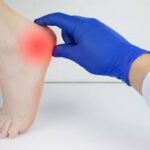Hyperhidrosis is a medical condition characterized by excessive sweating that occurs beyond what the body needs for temperature regulation. This condition affects approximately 3% of adults between 20 and 60. Understanding the nature of hyperhidrosis, its underlying causes, and available treatment options can help individuals manage this condition effectively.
Understanding Hyperhidrosis Types
Hyperhidrosis manifests in two primary forms: primary focal hyperhidrosis and secondary generalized hyperhidrosis. Primary focal hyperhidrosis typically affects specific areas of the body. It most commonly affects the palms, soles of the feet, underarms, and face. This type usually begins during childhood or adolescence and appears to have a genetic component, as it often runs in families.
Secondary generalized hyperhidrosis results from underlying medical conditions or medications. Medical conditions such as diabetes, thyroid disorders, menopause, and certain infections can trigger excessive sweating. Medications, including antidepressants, blood pressure medications, and pain relievers, may also cause this type of hyperhidrosis.
The condition presents itself through sweating that occurs even when the body temperature is normal and no physical exertion has taken place. Affected individuals may experience sweating that soaks through clothing, makes handshakes uncomfortable, or interferes with gripping objects. Sweating typically occurs symmetrically on both sides of the body and may worsen during periods of stress or anxiety.
Exploring Causes and Risk Factors
The exact mechanism behind primary hyperhidrosis involves overactivity of the sympathetic nervous system, which controls the body’s sweat glands. The nerves that signal the sweat glands become hyperactive, producing more sweat than necessary for cooling the body. This overactivity appears to be related to genetic factors, as studies show that approximately 30-50% of people with primary hyperhidrosis have a family history of the condition.
Several factors can influence the severity of hyperhidrosis symptoms. Emotional stress, anxiety, and certain foods or beverages can trigger excessive sweating episodes. Spicy foods, caffeine, and alcohol commonly act as triggers for many individuals. Environmental factors such as heat and humidity can also worsen symptoms, though people with hyperhidrosis may sweat excessively even in cool environments.
Age also plays a role in symptom development. Primary hyperhidrosis typically begins before age 25, with many cases starting during puberty when hormonal changes can affect sweat gland activity. The condition tends to be chronic, meaning symptoms persist throughout life without treatment.
Understanding Treatment Options
Treatment approaches for hyperhidrosis range from topical solutions to surgical interventions, depending on the severity of symptoms and affected areas. Antiperspirants containing aluminum chloride represent the first line of treatment for mild to moderate cases. These products work by blocking sweat ducts and are most effective when applied to completely dry skin before bedtime.
Prescription treatments include stronger topical antiperspirants and oral medications. Anticholinergic medications can reduce sweating by blocking nerve signals to sweat glands, though they may cause side effects such as dry mouth and blurred vision. Topical anticholinergic treatments offer a localized approach with fewer systemic side effects.
Botulinum toxin injections provide effective treatment for focal hyperhidrosis, particularly in the underarms, palms, and soles. The toxin temporarily blocks nerve signals to sweat glands, reducing sweating for 4-6 months. This treatment requires periodic re-injection to maintain effectiveness.
Find a Neurologist
Hyperhidrosis affects millions of people worldwide, but effective treatment options can significantly reduce symptoms and improve quality of life. The condition requires proper medical evaluation to distinguish between primary and secondary types and to rule out underlying medical conditions. Treatment success often depends on working with healthcare providers to find the most appropriate approach for individual symptoms and lifestyle needs. Consult with a neurologist to learn more about your options.







